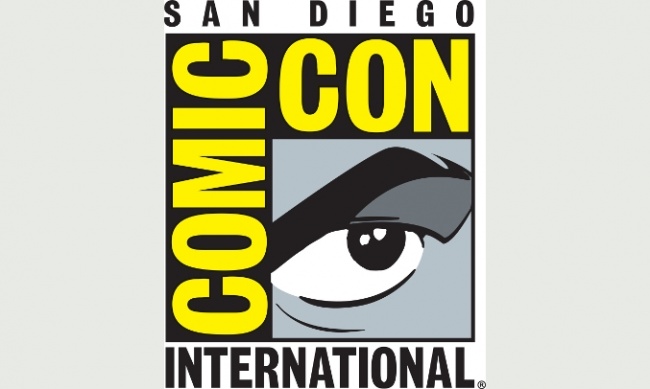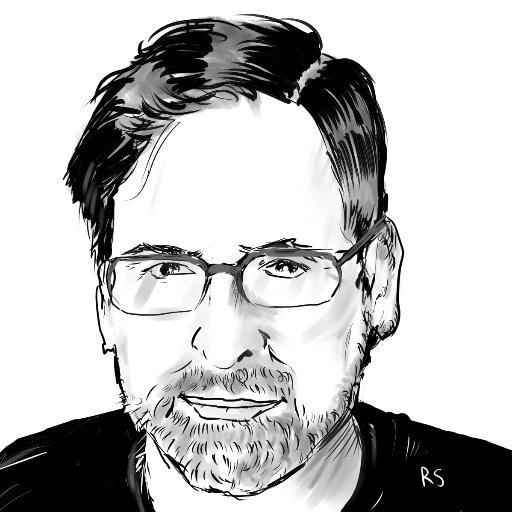San Diego Comic-Con 2016 is now behind us and the impressions of this year’s show are just settling in. Some news was made, fans got first looks at much-anticipated new movies like Wonder Woman, Spider-Man: Homecoming and Fantastic Beasts and Where to Find Them; groundbreaking cartoonists Lynda Barry and Matt Groening were inducted into the Eisner Awards Hall of Fame; and big piles of nerd money sloshed into the coffers of exhibitors and the businesses of San Diego.
And the show itself? When I look back at my wrap-ups of the 2014 and 2015 editions, I find it hard to squeeze in any new observations. SDCC hit a plateau a few years ago, hemmed in by the physical dimensions of the San Diego Convention Center and the capacity of hotels to accommodate out-of-town guests. Even steep price increases in both badges and Con-rate hotels have not done much to stem demand. The show today is what it is, with fewer surprises or capacity for surprises than in the big growth years of the 00’s. That status, while perhaps disconcerting in a media age that demands constant shock and awe from its spectacles, doesn’t seem fatal to the Con’s reputation or the ability of the organizers to put on a top flight event. It’s just the New Normal.
Business as Usual in Hall H. The mainstreaming of geek culture in the entertainment industry seems to have changed the dynamics of Hollywood’s interaction with the Con. Whereas in the early 2000s, it was deemed an urgent marketing priority to consolidate the enthusiasm of the hardcore SDCC fan audience around any new franchise, the smart move today is to spend marketing resources building the outside audience because the nerds will come no matter what.
Consequently, Hollywood’s participation in SDCC in the mid-teens seems to fall somewhere between courtesy and inertia. Warner Brothers and Marvel Studios trotted out their stars and previews to meet expectations, and, in Warner’s case, to substantiate rumors of a change in direction following the hostile critical reception of Batman v. Superman: Dawn of Justice. Mission, such as it was, accomplished. However, the warmest moments in Hall H, as far as I could tell, were reserved for the retrospective tributes to well-loved franchises like Star Trek and Aliens.
In the New Normal, Hall H is no longer the driver of hype and buzz it was in the Twilight era; it’s the room where you see the programs that 6000 other people also want to see. You might even be able to walk right in without sleeping out in line all night, as was the case at some points last weekend. That’s not as sexy, but it seems a little more healthy.
View from the Floor. In the Exhibit Hall, the subjective evaluation of myself and nearly everyone I spoke to is that traffic seemed down. How could this be, considering the Con’s attendance is locked at the same maximum capacity it’s been in years’ past, roughly 135,000 unique attendees?
One theory is that the new RFID access controls instituted by CCI this year cut down significantly on shenanigans around badge-sharing that may have pumped previous years’ crowds well beyond the reported numbers. In other words, the heavy but not insane volume of people on the show floor represents an “honest” 135K, as opposed to the extra 5-10K who snuck in on counterfeits or illegal shares in years’ past.
Another possibility is that offsite activities significantly cut into the time that badge-holders spent in the Exhibit Hall. Popular attractions like the Game of Thrones Hall of Faces at the Omni, the Mr. Robot VR experience in the Gaslamp, the South Park setup in front of the Hilton, and the Adult Swim carnival behind the Convention Center featured big crowds and long wait times. If you’re spending two and half hours in line for GOT, or an hour at the Marriott to pick up a pre-paid Con t-shirt, as I heard were the cases on Saturday, that’s time you’re not spending browsing and buying merch on the floor.
Whatever the cause, the effect was that, among the exhibitors and artists I spoke to, the number who said this was a bad dollar show or “worst SDCC ever” for sales outnumber the “strong” or “best show ever” crowd by about 4:1. That was consistent across different categories of vendors – collectibles dealers, small press, merchandise and apparel, and artist alley folks. I didn’t talk to toy vendors, who were numerous; perhaps it was a better Con for them. I eagerly await a more systematic and data-driven survey to substantiate or disprove what are, for now, cherry-picked subjective impressions.
I also heard from a bunch of panel participants that attendance was lighter than expected for the staple comic and fan-interest programs, but higher in ones focused on art, technology and business. That was my personal experience – but again, I hesitate to draw too strong a conclusion from that without a broader view.
Success, 2016-style. One reason it’s possible to pick on these issues at the edges of the Con is that organizers once again made certain nothing big went wrong. If that seems like faint praise, believe me, it’s not. How many events of this scale can you take for granted will “just work” for the vast majority of attendees?
The traditional post-Con talkback with CCI President John Rogers focused on issues like ADA access, security and registration efficiency, which challenge any large event. Surely there is always room for improvement, but there were no major organizational snafus and – yes, let’s say it out loud now that SDCC 2016 is safely behind us – no security problems of the sort that have become tragically common in the past few months. Can we have a big, thunderous round of applause (and sigh of relief) for that?
So… like SDCC 2014 and SDCC 2015, SDCC 2016 was a huge, sprawling spectacle, jammed with crowds, eliciting the usual gripes from exhibitors and attendees, but generally coming off without a hitch. That’s not the earth-shattering news that past Cons have generated. But in the era that we’re in these days; that’s the New Normal.
Programming note: My columns in ICv2 will be appearing with a little bit more frequency in coming months, and if there are any burning business issues in the geek biz that you’d like me to take a look at, tweet at @robsalk or drop a line to my editors Milton and Nicole.
The opinions expressed in this column are solely those of the writer, and do not necessarily reflect the views of the editorial staff of ICv2.com.
Rob Salkowitz (@robsalk) is the author of Comic-Con and the Business of Pop Culture.

Column by Rob Salkowitz
Posted by Rob Salkowitz on July 26, 2016 @ 4:13 am CT



